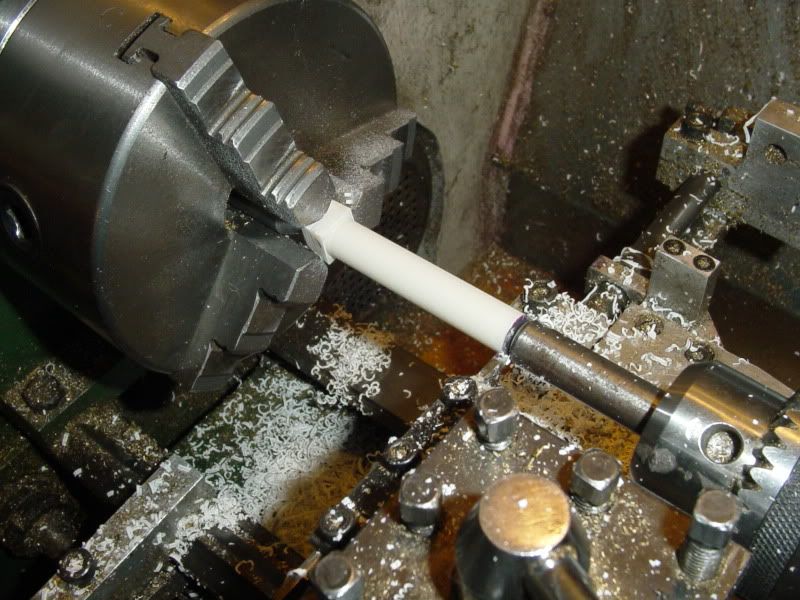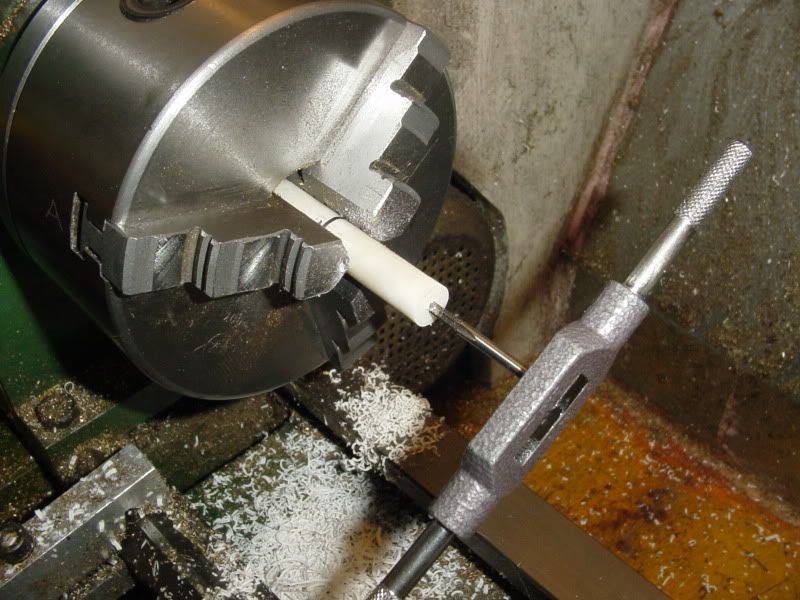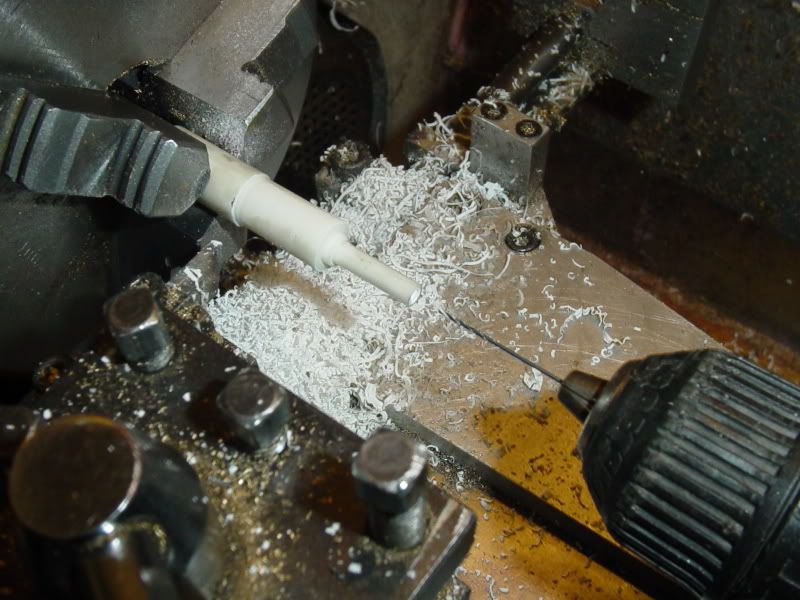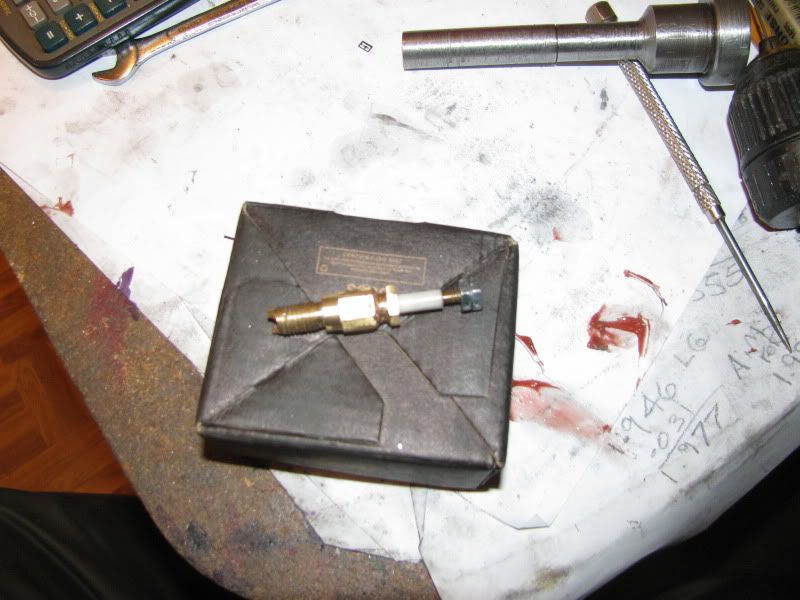And here it is in the lathe, between centers--no lathe dog required--The one end fits between the chuck jaws to drive the Corian ---It is not being gripped by the chuck jaws.(There is a center hiding in there too.) the outer diameter has been machined to a "full round" except the bit between the chuck jaws. The ends will be trimmed off in a final step. Second picture shows mew tapping one end.














![DreamPlan Home Design and Landscaping Software Free for Windows [PC Download]](https://m.media-amazon.com/images/I/51kvZH2dVLL._SL500_.jpg)


















![MeshMagic 3D Free 3D Modeling Software [Download]](https://m.media-amazon.com/images/I/B1U+p8ewjGS._SL500_.png)






















